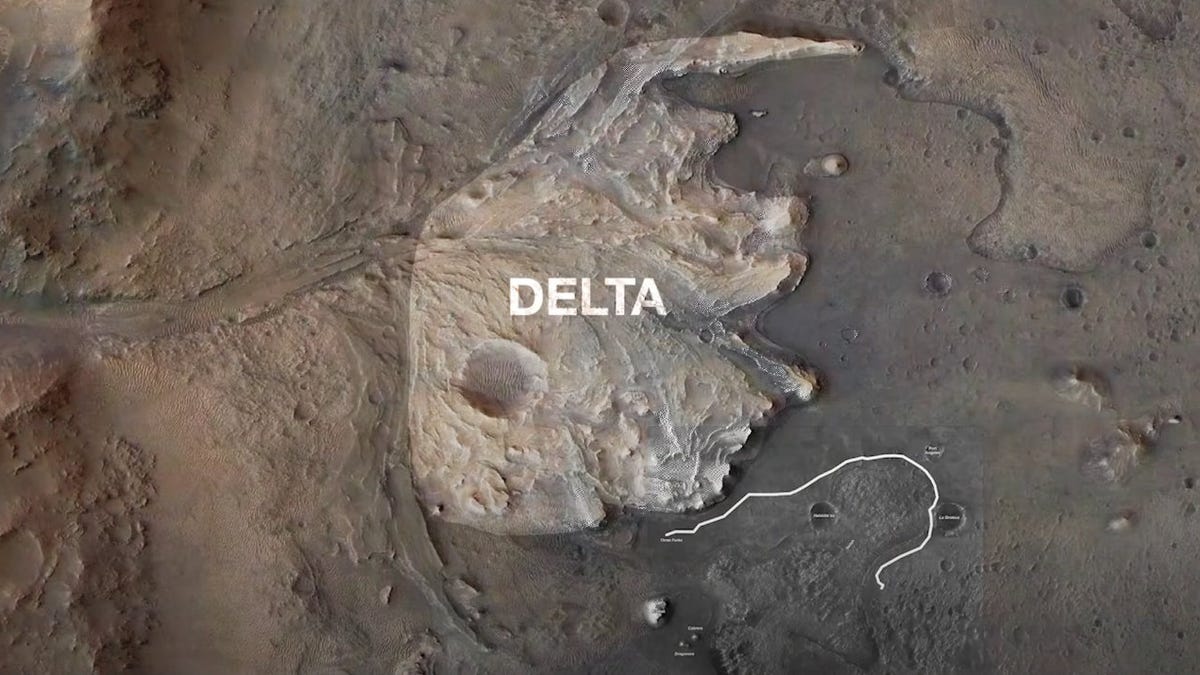NASA Mars Rover Set to Investigate River Delta's 'Geologic Feast'
NASA says the dry river delta is "the mission's best bet for finding the preserved remnants of ancient microbial life."
This is why NASA's Perseverance rover went to Mars. The robotic explorer kicked off a new science campaign on Monday with the goal of exploring an ancient river delta that could hold all sorts of fascinating secrets about the red planet.
Percy sprinted to get to the now-dry delta, and for good reason. "The delta at Jezero Crater promises to be a veritable geologic feast and one of the best locations on Mars to look for signs of past microscopic life," said Thomas Zurbuchen, NASA Science Mission Directorate associate administrator, in a statement on Tuesday.
Deputy program scientist Adrian Brown expanded on why scientists are excited for the delta in a mission status update last week: "Another mind-bending possibility is that we may find fossilized traces of ancient Martian life in these delta rocks." In one scenario, Brown wrote, life might have kicked off on Mars around 4 billion years ago when it was a friendlier place. Preserved evidence of those possible microbes could have been washed into the river and then into the crater.
Percy will be collecting rock samples from this area. NASA is working on a sample return mission to pick up the rover's rock collection and bring it back to Earth for detailed study in labs. "We will look for signs of ancient life in the rocks at the base of the delta, rocks that we think were once mud on the bottom of 'Lake Jezero,'" said project scientist Ken Farley of Caltech. "Higher up the delta, we can look at sand and rock fragments that came from upstream, perhaps from miles away."
One of the first orders of business for the Delta Front Campaign is to sort out the best way to climb up the rise of the delta. The campaign is expected to take about six months and will involve gathering around eight samples.
The new campaign is a big occasion for the rover, which arrived on Mars in February 2021. Its flying companion, the Ingenuity helicopter, is along for the adventure. It's a unexplored world with a fascinating history of water. As Brown said, "The prospect of the delta for me is that every day will be full of excitement and could bring anything."


